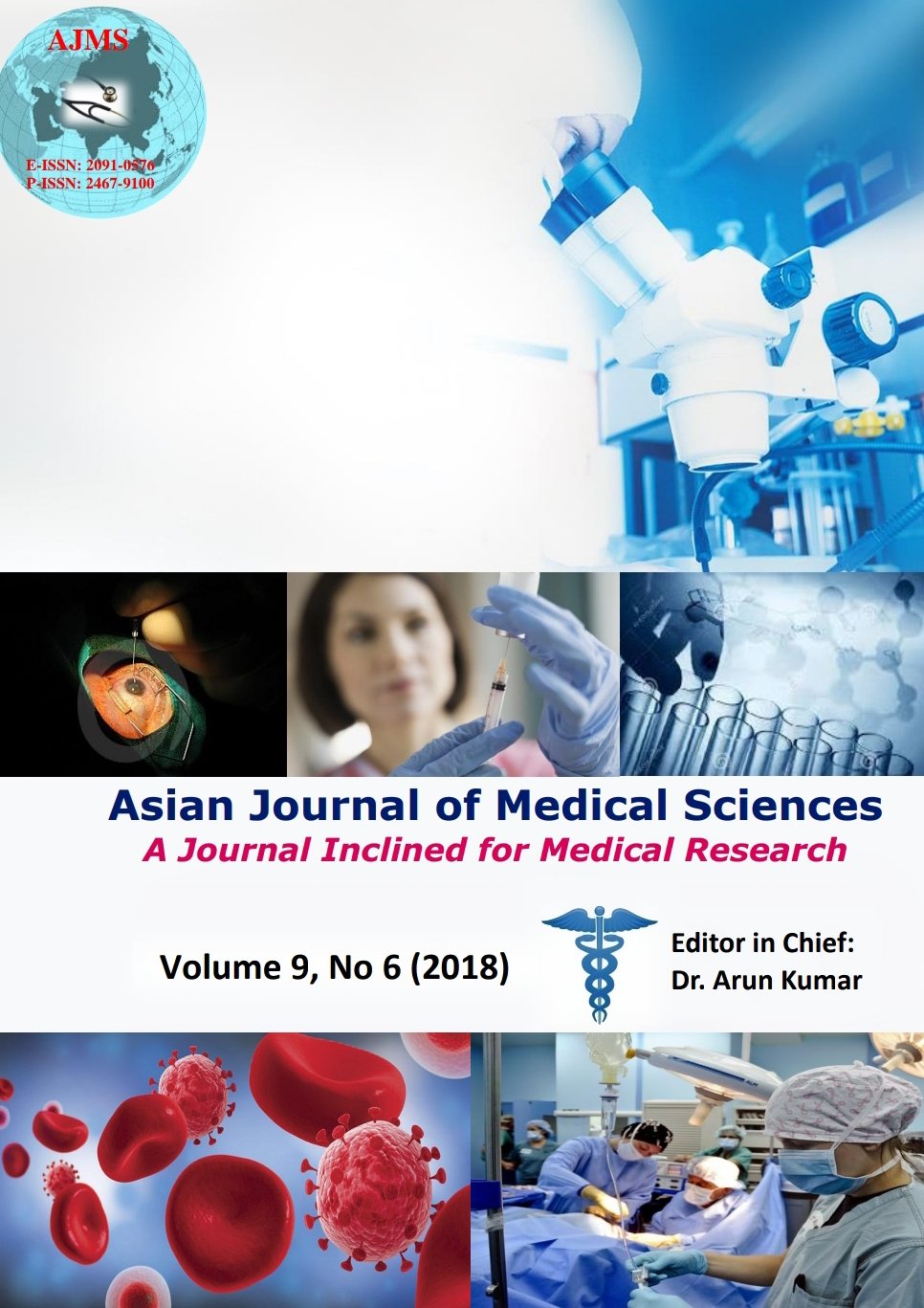Study of fracture shaft of Femur and its outcome treated with K- Nail in Manipal Teaching Hospital
Keywords:
Femur fracture, Kuntscher nail, Shaft of femur fractureAbstract
Background: Intramedullary interlocking nail is commonly accepted standard treatment in fracture shaft of femur. Its cost, technique, necessity of fracture table and image intensifier make it difficult in using for such cases where facilities are not available. In developing countries like Nepal open Kuntscher nailing is still an option for treating fracture shaft of femur. Its results and outcomes are comparable to that of intramedullary interlocking nails.
Aims and Objectives: This study was undertaken to evaluate the outcome of Kuntscher nailing in fracture shaft of femur with regards to operative duration, union, infection, limb-length, and range of motion of knee and hip joints.
Materials and Methods: This retrospective study included seventy-six patients with fracture shaft of femur. This study was conducted for a period from December 2014 to December 2017. The study outcome was assessed in terms of operative time duration, union, infection, limb-length, and range of motion of knee and hip joints.
Results: Seventy six patients with fracture shaft of femur with mean age of 32.36 years ranging from 15 to 65 years were included in the study. Operation duration ranges from 55 to 95 minutes, with average healing time of 17 weeks. Wound infection was seen in 5% cases, with not much limb length discrepancy and knee range of motion 100 -135 degree achieved by the end of 9 months in more than 95 % cases.
Conclusion: Kuntscher nail is still a relevant option for treatment of fracture shaft of femur with good functional and clinical outcome.
Asian Journal of Medical Sciences Vol.9(6) 2018 90-92
Downloads
Downloads
Published
How to Cite
Issue
Section
License
Authors who publish with this journal agree to the following terms:
- The journal holds copyright and publishes the work under a Creative Commons CC-BY-NC license that permits use, distribution and reprduction in any medium, provided the original work is properly cited and is not used for commercial purposes. The journal should be recognised as the original publisher of this work.
- Authors are able to enter into separate, additional contractual arrangements for the non-exclusive distribution of the journal's published version of the work (e.g., post it to an institutional repository or publish it in a book), with an acknowledgement of its initial publication in this journal.
- Authors are permitted and encouraged to post their work online (e.g., in institutional repositories or on their website) prior to and during the submission process, as it can lead to productive exchanges, as well as earlier and greater citation of published work (See The Effect of Open Access).




